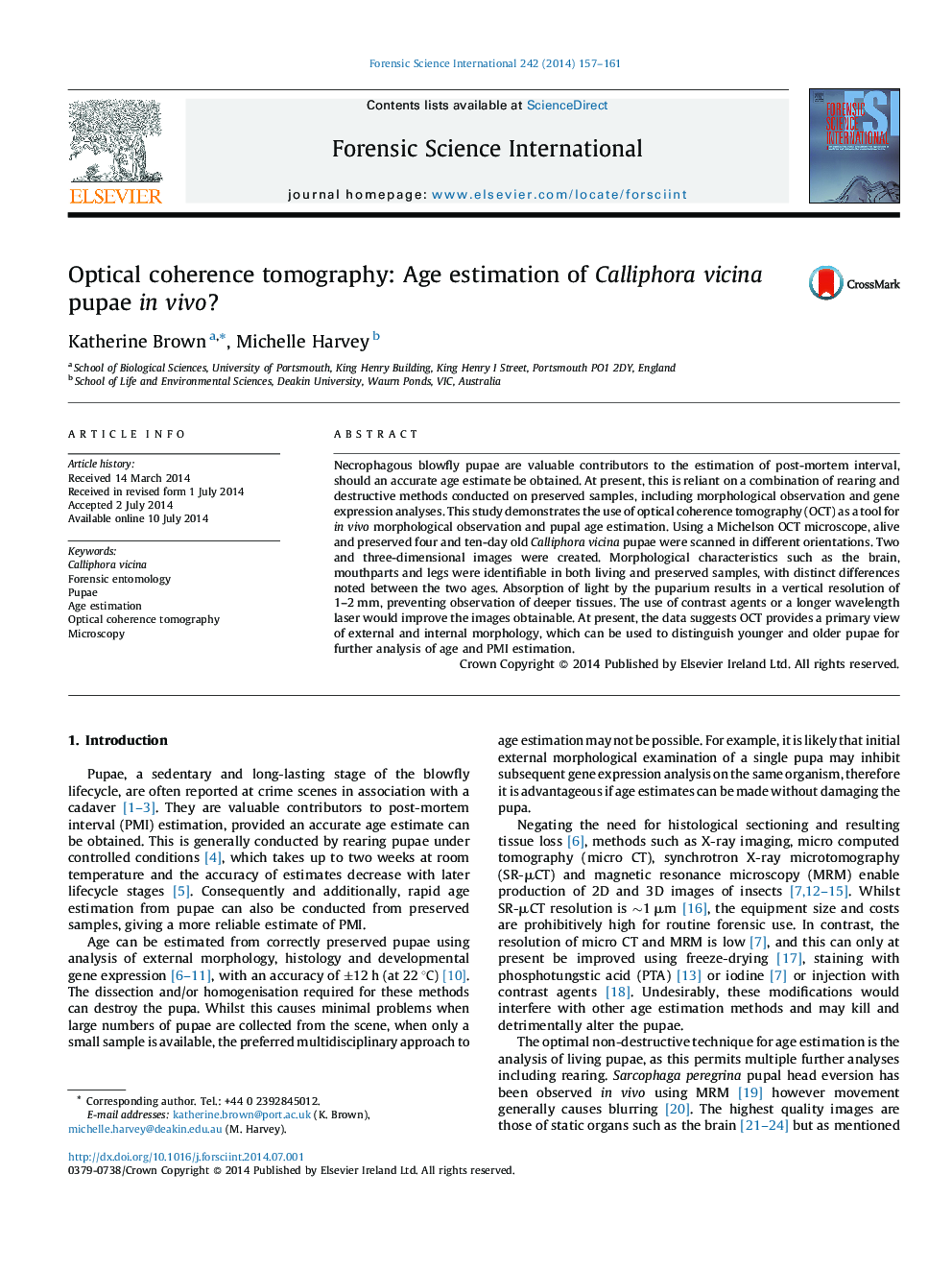| Article ID | Journal | Published Year | Pages | File Type |
|---|---|---|---|---|
| 95463 | Forensic Science International | 2014 | 5 Pages |
•We examine OCT microscopy as a tool for in vivo pupal age estimation.•Alive and preserved Calliphora vicina pupae were observed in 2D and 3D.•Brain, mouthparts and legs were identifiable in four- and ten-day old pupae.•The current maximum of 1–2 mm depth penetration limits observations.•We suggest OCT provides a complimentary method of pupal age estimation.
Necrophagous blowfly pupae are valuable contributors to the estimation of post-mortem interval, should an accurate age estimate be obtained. At present, this is reliant on a combination of rearing and destructive methods conducted on preserved samples, including morphological observation and gene expression analyses. This study demonstrates the use of optical coherence tomography (OCT) as a tool for in vivo morphological observation and pupal age estimation. Using a Michelson OCT microscope, alive and preserved four and ten-day old Calliphora vicina pupae were scanned in different orientations. Two and three-dimensional images were created. Morphological characteristics such as the brain, mouthparts and legs were identifiable in both living and preserved samples, with distinct differences noted between the two ages. Absorption of light by the puparium results in a vertical resolution of 1–2 mm, preventing observation of deeper tissues. The use of contrast agents or a longer wavelength laser would improve the images obtainable. At present, the data suggests OCT provides a primary view of external and internal morphology, which can be used to distinguish younger and older pupae for further analysis of age and PMI estimation.
